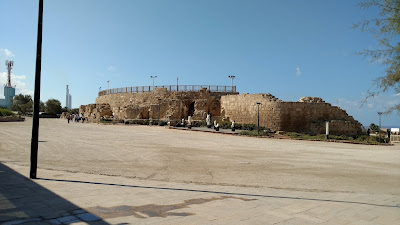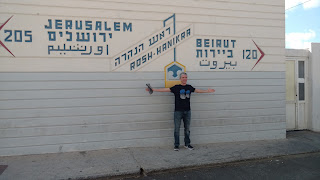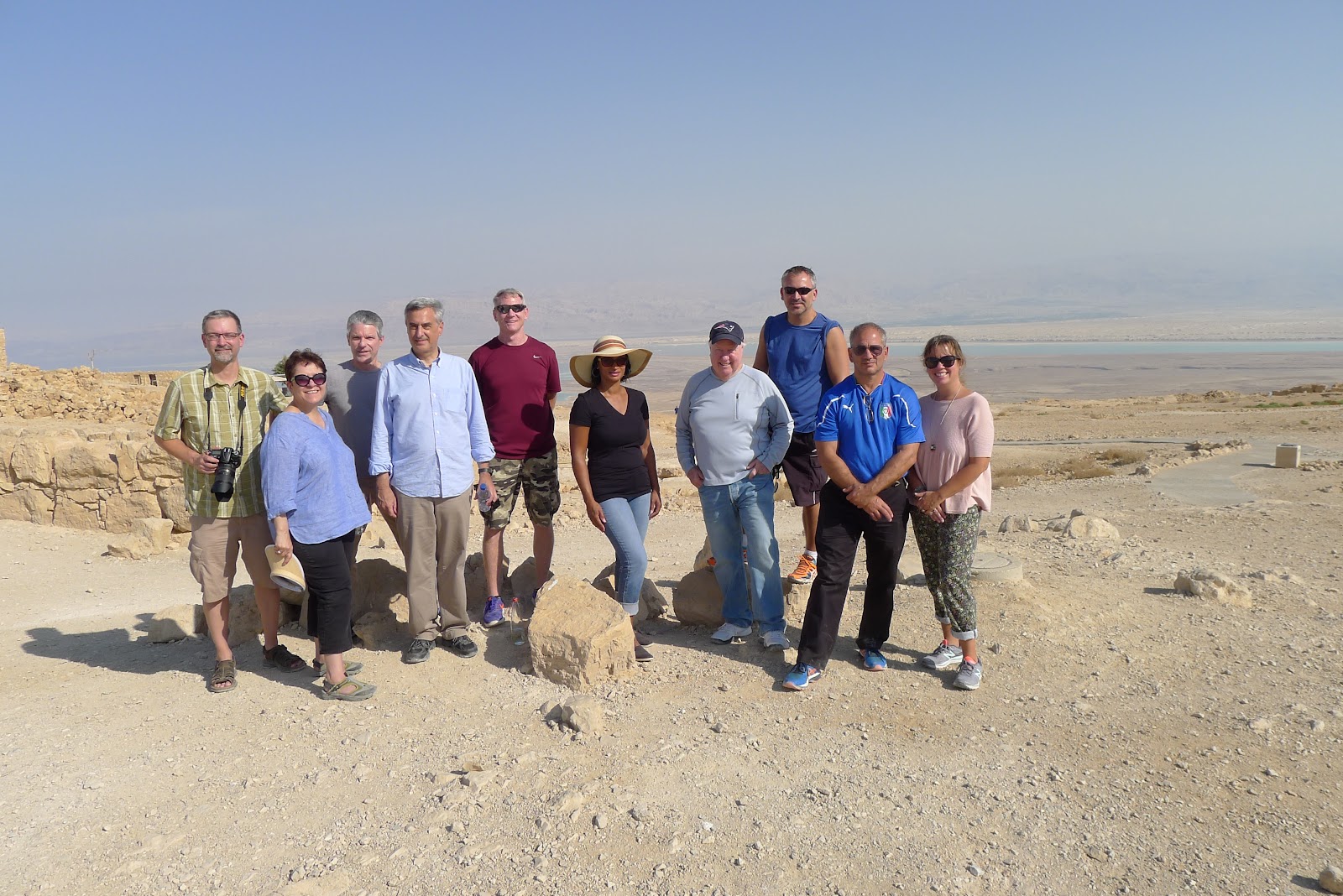Overview:
Israel has emerged as a regional economic and military powerhouse, leveraging its booming high-tech sector, massive defense industry, and concerns about Iran to foster partnerships around the world, even with some of its former foes. The State of Israel was declared in 1948, after Britain withdrew from its mandate of Palestine. The UN proposed partitioning the area into Arab and Jewish states, and Arab armies that rejected the UN plan were defeated. Israel was admitted as a member of the UN in 1949 and saw rapid population growth, primarily due to migration from Europe and the Middle East, over the following years. Israel fought wars against its Arab neighbors in 1967 and 1973, followed by peace treaties with Egypt in 1979 and Jordan in 1994. Israel took control of the West Bank and Gaza Strip in the 1967 war, and subsequently administered those territories through military authorities. Israel and Palestinian officials signed a number of interim agreements in the 1990s that created an interim period of Palestinian self-rule in the West Bank and Gaza. Israel withdrew from Gaza in 2005. While the most recent formal efforts to negotiate final status issues occurred in 2013-2014, the US continues its efforts to advance peace. Immigration to Israel continues, with more than 20,000 new immigrants, mostly Jewish, in 2020.
The Israeli economy has undergone a dramatic transformation in the last 25 years, led by cutting-edge, high-tech sectors. Offshore gas discoveries in the Mediterranean, most notably in the Tamar and Leviathan gas fields, place Israel at the center of a potential regional natural gas market. However, longer-term structural issues such as low labor force participation among minority populations, low workforce productivity, high costs for housing and consumer staples, and a lack of competition, remain a concern for many Israelis and an important consideration for Israeli politicians. Former Prime Minister Benjamin NETANYAHU dominated Israel's political landscape from 2009 to June 2021, becoming Israel's longest serving prime minister before he was unseated by Naftali BENNETT, after Israel's fourth election in two years. BENNETT formed the most ideologically diverse coalition in Israel's history, including the participation of an Arab-Israeli party. Under the terms of the coalition agreement, BENNETT would remain as prime minister until August 2023, then Alternate Prime Minister and Foreign Minister Yair LAPID would succeed him. Israel signed normalization agreements – brokered by the US – with Bahrain, the United Arab Emirates, and Morocco in late 2020 and reached an agreement with Sudan in early 2021.
Source: CIA World Factbook
Israel's population of 8 million is approximately 75 percent Jewish and 18 percent Muslim, with smaller Christian, Druze, and other religious groups. According to the World Bank, Israel’s 2015 per capita gross domestic product of $35,440 places it between Japan and Italy in the high-income group of world nations. Support for Israel’s security and promotion of a negotiated Arab-Israeli peace settlement have been bedrocks of U.S. regional policy. Comprehensive, final status negotiations between Israel and the Palestinian Authority broke down in 2014. The United States is Israel's largest single-country trading partner. Bilateral trade has grown to $48.8 billion in 2014 since the two countries concluded a Free Trade Agreement in 1985. U.S. foreign direct investment in Israel was $10.8 billion in 2014, compared with $9 billion in Israeli foreign direct investment in the United States.
Source: BBC Country Profile
American Embassy Tel Aviv:
The embassy faced several operational challenges. Its offices are located in eight facilities, which presents security risks as well as internal coordination difficulties. All other embassies of other countries were also located in Tel Aviv. Although the Ministry of Defense has offices in Tel Aviv, embassy staff must travel 40 miles to meet with most Israeli government officials who work in Jerusalem, the country's declared capital. While Embassy Tel Aviv and the consulate general in Jerusalem are independent diplomatic missions, they were operationally interdependent. This situation is a consequence of a long-standing U.S. policy to defer a decision on the permanent location of the embassy pending a negotiated peace between Israel and the Palestinians. Presidents Clinton, George W. Bush, and Barack Obama have regularly invoked the clause, delaying the move of the embassy to Jerusalem. That changed, of course, in May 2018, when the American embassy was moved to Jerusalem thus ending 70 years of international consensus and that the US effectively recognizes Jerusalem as the capital of Israel. and may effectively signal the end of moves to achieve peace between Israelis and Palestinians. Tel Aviv is now considered a Branch Office but still maintains much of the management functions. Embassy Tel Aviv’s strategic goals focus on supporting lasting Middle East peace, strengthening the U.S.-Israel economic relationship and supporting Israeli-Palestinian economic engagement, helping Israel deter terrorism, and bolstering Israel’s security and regional stability.
Findings:
The
Management Counselor was Johnathan Schools who was very responsive. He returned to the embassy in Jerusalem and
is now the Counselor. OIG found
deficiencies in the housing, motor pool, preventive maintenance, and cashier
operations; in the disposition of one underused property including a recommendation
to sell Hassadot property and put the $8 million in estimated sales proceeds to
better use. The Safety, Health, and
Environmental Management (SHEM) program needed improvement. Given the high number of motor vehicle accidents
embassy drivers should take the required Smith driver safety training.
Paul Kenul was the FMO and actually, to me, he seemed to be miscast in his position. I had to intercede in getting a fiscal irregularity cleared through CGFS once he had all the documentation submitted for a Cashier loss of $2,590. Not surprised that now he is assigned to the Political-Military bureau. The senior LE Staff, Financial Specialist was Peter Dayan, a long time well respected local employee. The Embassy Cashier was responsible for
maintaining shuttle
bus coupons and gas cards contrary to regulations. The suspense deposit abroad Account was used
improperly to deposit funds from private corporations and institutions to pay
expenses for promotional events held at the Ambassador’s residence. The embassy
reimbursed many of the Ambassador's representation claims in cash, although the
Department required them to be reimbursed via Electronic Fund Transfer, in
accordance with the Debt Collection Improvement Act of 1996. Embassy
timekeepers did not submit time and attendance (T&A) documentation in a
timely manner and the principal timekeeper was submitting T&A reports
without backup documentation.
Supervisors
of 15 Department LE staff employees had not submitted
performance evaluations by the due date. There was no LE Staff training
plan. I was impressed with the HRO,
Natasha Burney who had a lot on her plate.
She ended up being a Senior HRO and is now in Berlin.
Highlights:
I was the designated Co-CLO for the team and accordingly had to arrange tours every weekend. Fortunately, I had contact with an excellent tour guide, Mike Terknick, from a previous visit to Jerusalem and Tel Aviv 2012. I set up tours with Mike of the Old Jerusalem, the Holy Land, including Nazareth, the Sea of Galilee and Capernaum, Caesarea and Akko and Haifa. From Jerusalem we toured the area of Judah and Samaria, the West Bank town of Herodion, Massada and the Dead Sea and Ein Gedi Reserve. (see separate blogs for all tours). Three of our inspectors spent a long weekend in Petra having arranged for Jordanian visas and flying to Eilat.
 |
| Tel Aviv is the second largest city in Israel after Jerusalem located along the Mediterranean coastline with a
population of over 400 thousand. It is the financial center and the technology
hub of Israel. The city was founded in
1909 by Jewish immigrants on the outskirts of the ancient port city of Jaffa. Immigration by mostly Jewish refugees meant
that the growth of Tel Aviv soon outpaced Jaffa's, which had a majority Arab
population. The United States was the first country to recognize Israel as a state in 1948. Tel Aviv and Jaffa were merged into a single municipality in 1950. We stayed at the Renaissance hotel right on the beach. |
 |
| Tel Aviv’s entire west side faces the Mediterranean Sea. There is nine 9 miles of some of the best
beaches in the world with clean wide stretches of sand and stunning views of
the sea, white sails and surfers. All Tel
Aviv beaches have clean toilets and outdoor cold showers, and at most of the
beaches there are indoor shower stalls and changing rooms. |
 |
| The Tel Aviv Performing Arts Center and Art Museum Complex |
 |
| Tel Aviv Museum of Art comprises a
comprehensive collection of local art from the beginning of the 20th century to
the present, modern and contemporary art, and art from the 16th to the 19th
century including old masters and impressionists. |
 |
| Rabin Square, formerly Kings of Israel Square is a large public city
square in the center of Tel Aviv. Over the years it has been the site of
numerous political rallies, parades, and other public events. In 1995 the
square was renamed 'Rabin Square' following the assassination of Yitzhak Rabin.
The square is surrounded by the city
hall building to the north. |
 |
The Embassy Branch Office in Tel Aviv is located in a five-story
building along the Mediterranean coast.
|
 |
| I rented a bike one afternoon and enjoyed the five mile promenade along the beach from Jaffa to Tel Aviv |
 |
View from the bike path along the Yarkon River. Hayarkon Park has 3.5 miles of jogging trails.

Goocha Restaurant in Tel Aviv known for its quality seafood |
Salads and appetizers for starters at the Old Man and the Sea restaurant at Jaffa port






















































